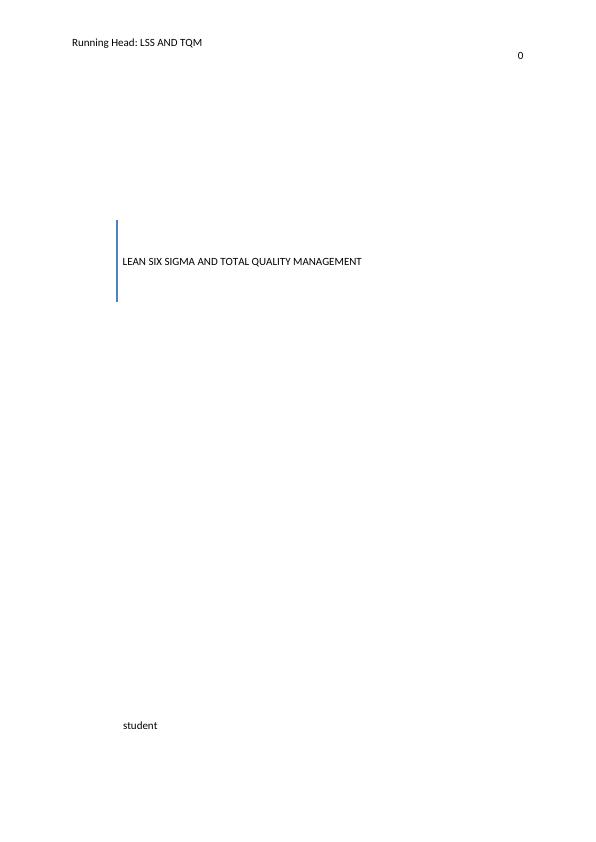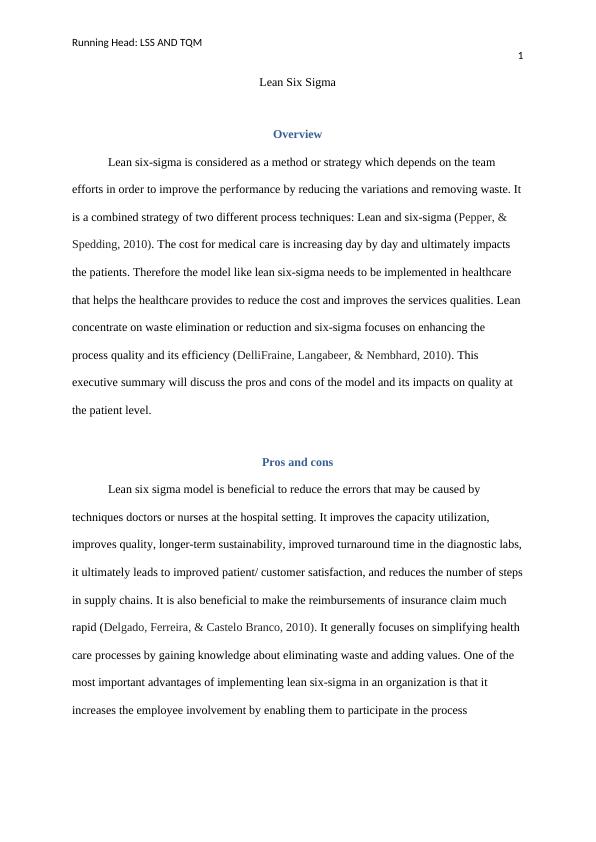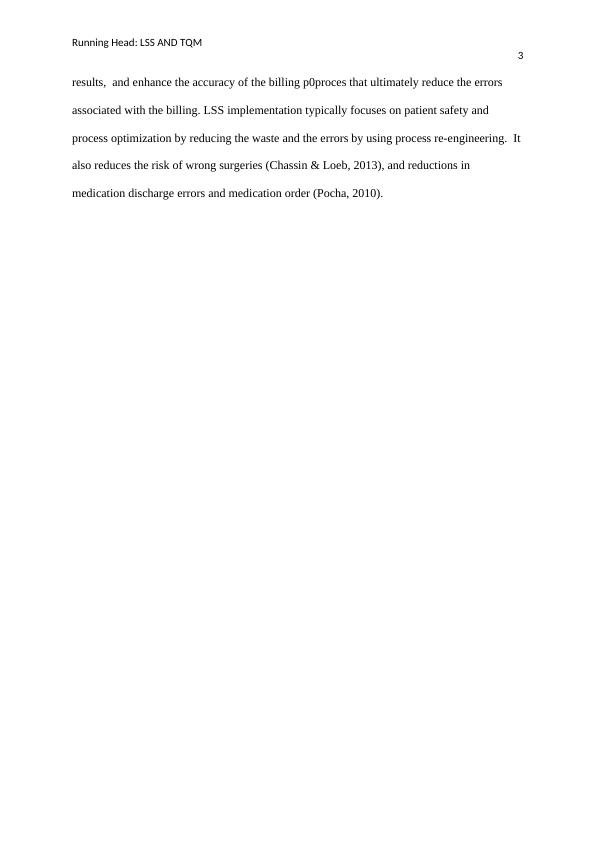Lean Six Sigma and Total Quality Management
11 Pages2345 Words318 Views
Added on 2023-05-30
About This Document
This executive summary discusses the pros and cons of Lean Six Sigma and Total Quality Management (TQM) and their impacts on quality at the patient level. Lean Six Sigma is a combined strategy of Lean and Six Sigma that focuses on waste reduction and process quality improvement. TQM is a systematic approach to improving the quality of an organization's output. Both models have advantages and disadvantages. Implementing these models in healthcare settings can reduce costs, improve efficiency, and enhance patient care. Desklib offers study material for various courses and subjects.
Lean Six Sigma and Total Quality Management
Added on 2023-05-30
ShareRelated Documents
End of preview
Want to access all the pages? Upload your documents or become a member.
Lean Six Sigma in Industries
|18
|6554
|446
Assignment - Nursing Leadership and Management
|4
|528
|11
Aligning Lean Six Sigma Strategies with Environmental Challenges: A Case Study of Australian Paper
|21
|4882
|354
Logistics: Six Sigma, Lean Management, 4P Logistics, Fishbone Analysis and Solutions
|13
|2893
|400
As per the estimation the Institute of Medicine
|8
|1417
|21
Project Management Methodologies: Six Sigma and Lean Manufacturing
|12
|3233
|459




